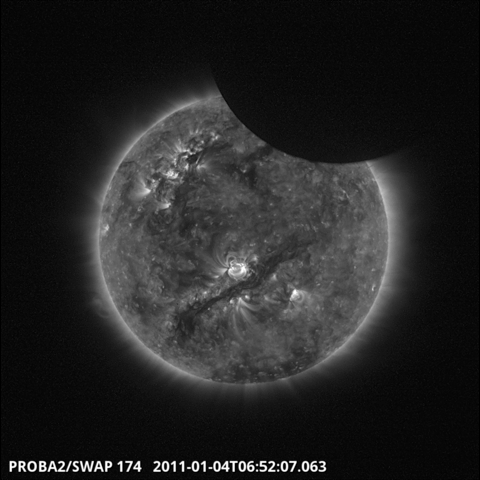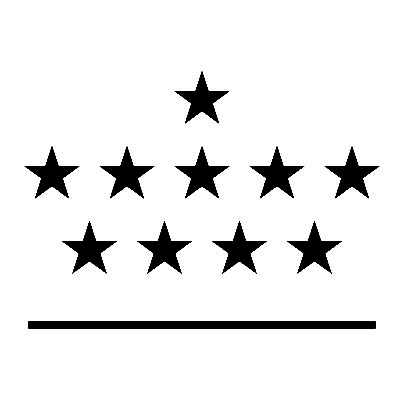Nederlandstalige versie -- Version Française

the movie - will be updated as soon as more data came down
ESA's PROBA2 microsatellite experienced a remarkable conjunction of the spheres on January 4, 2011. The Sun, Moon and Earth lined up in front of the satellite, in a real-life version of the opening of science fiction classic 2001.
The Moon partially blocked PROBA2's view of the Sun, causing a partial eclipse as observed from the Sun-watching satellite. At the same time PROBA2 was flying into the shadow of the Earth, causing it to see a sunset. At that point the Sun, Moon, Earth and PROBA2 were all on the same line in space.
'This is a spectacular event,' said Bogdan Nicula of the Royal Observatory of Belgium (ROB), who calculated where and when this double-eclipse would happen. 'It is a nice exercise to model the orbit and relative positions of all three celestial bodies.'
The images making up this video were observed by PROBA2 with its SWAP imager - designed by Centre Spatial de Liège, CSL and operated by ROB - which operates at extreme ultraviolet (EUV) wavelengths to monitor the swirling layer of the solar corona just above the Sun's surface.
During the eclipse event, SWAP's view of the Sun and Moon can be seen to become gradually fainter as EUV is progressively blocked by Earth's atmosphere - an EUV-sunset. After passing through Earth's shadow, PROBA2 sees a gradually more EUV-bright Sun - an EUV-sunrise. At that point of the orbit the Moon is no longer eclipsing the Sun.
'We had to work very hard to get this high-resolution pointing needed for these images,' explained David Berghmans, SWAP's principal investigator, adding that with the whole of PROBA2 less than a cubic metre in volume, SWAP is only the size of a large shoe box. But the results speak for themselves. And, as far as I am aware, the Mayans did not predict this should cause concerns!'
The event proved scientifically useful for LYRA, PROBA2's other Sun-watching instrument normally used to monitor solar radiation intensity, explained LYRA principal investigator Marie Dominique: 'While the EUV sunset-sunrise season blinds SWAP, it allows LYRA to track the amount of solar EUV light passing through Earth?s atmosphere, which helps determine its particle content.'
PROBA2's eclipse season
A terrestrial solar eclipse occurs when the Moon moves between the Sun and Earth. The Moon orbits Earth every 27 days, but eclipses are much rarer because the Moon-Earth orbital plane is tilted five degrees relative to the Earth-Sun orbital plane. Satellites can experience eclipses more often however - and ESA's forthcoming Proba-3 mission will be a double-spacecraft generating artificial eclipses to view faint outer layers of the solar corona.
PROBA2's own orbit is optimised for solar observation, but for part of the winter season it experiences a sunset and sunrise, with Earth obstructing PROBA2's view of the Sun for a few minutes per orbit. In addition, because both SWAP and LYRA are observing in particular areas of the EUV spectrum, these instruments experience gradually progressing EUV sunsets (and sunrises), as the light in question is being absorbed by the lower layer of the terrestrial atmosphere.
Outside of this sunset-sunrise season, PROBA2 has the Sun in view throughout its orbit, turning 90 degrees every 25 minutes to keep its navigational star trackers pointed away from Earth's disc. http://proba2.sidc.be
 |
 |
 |





